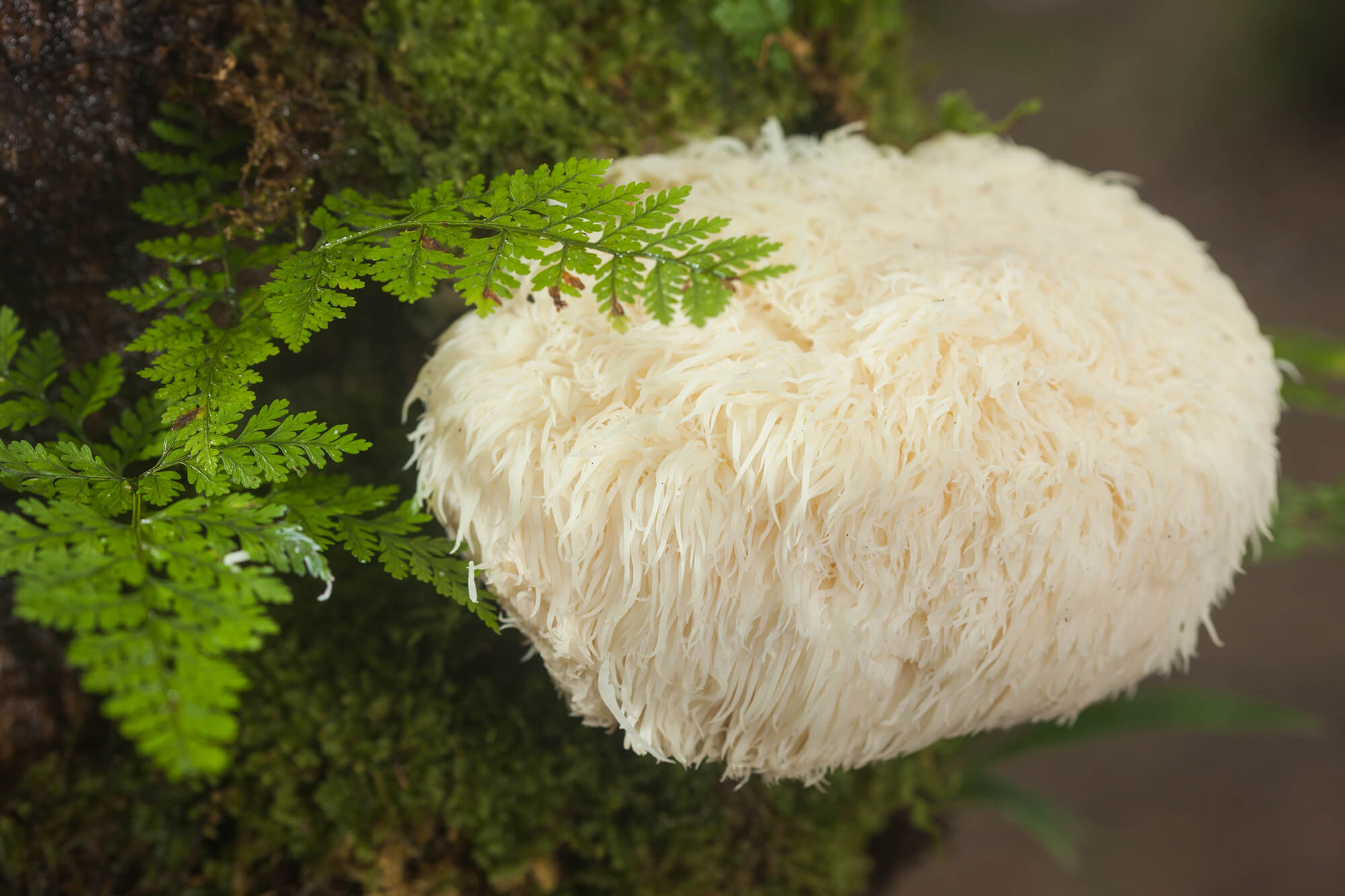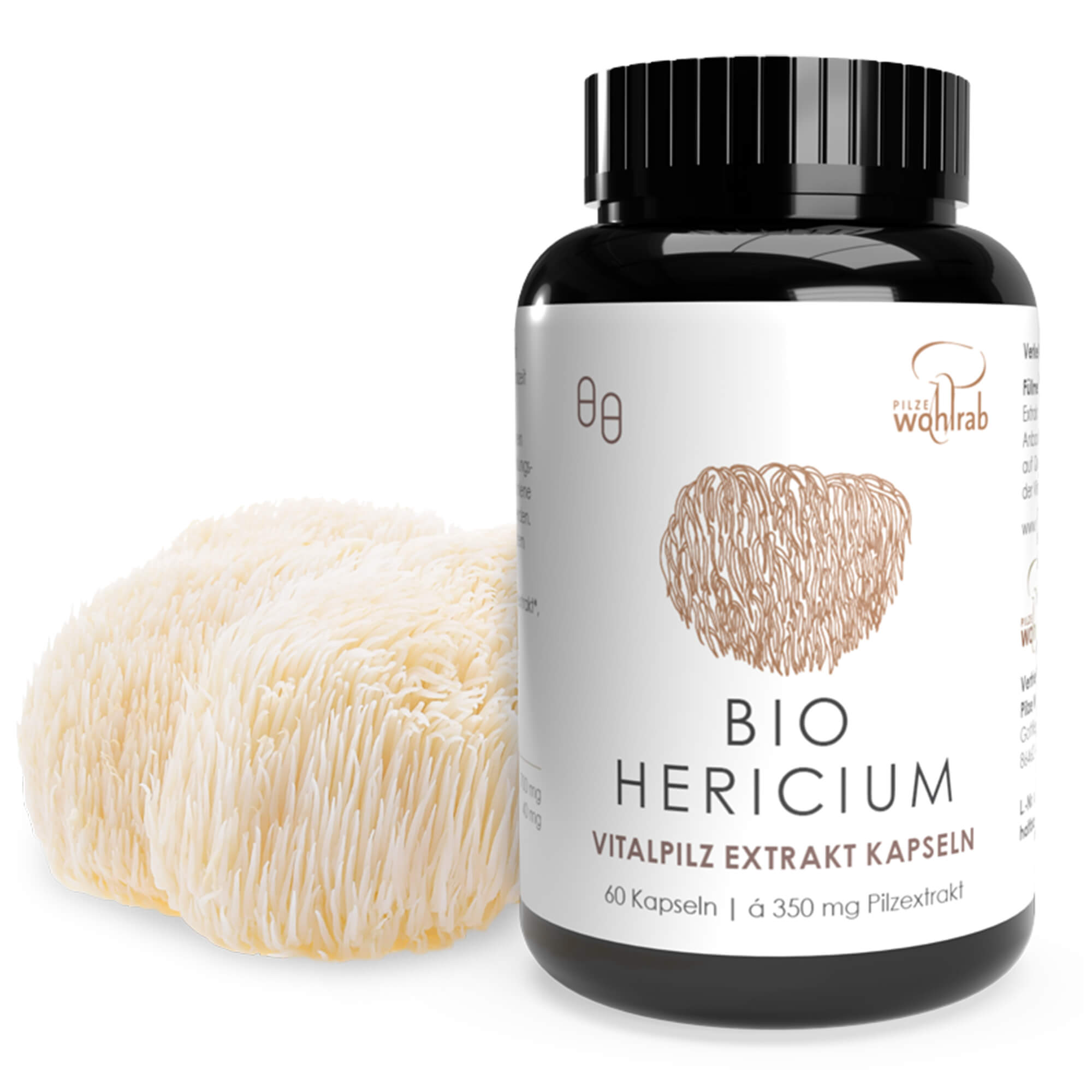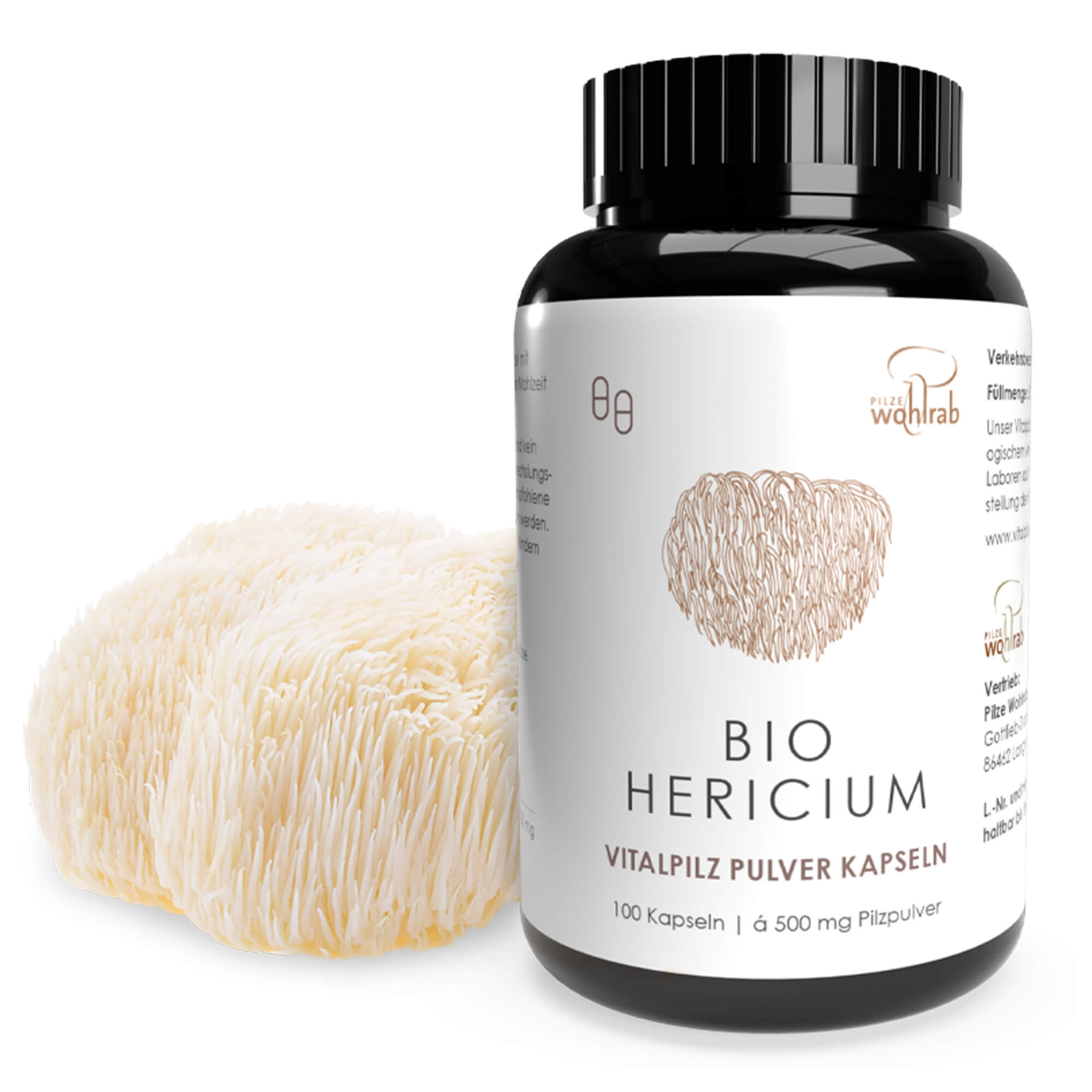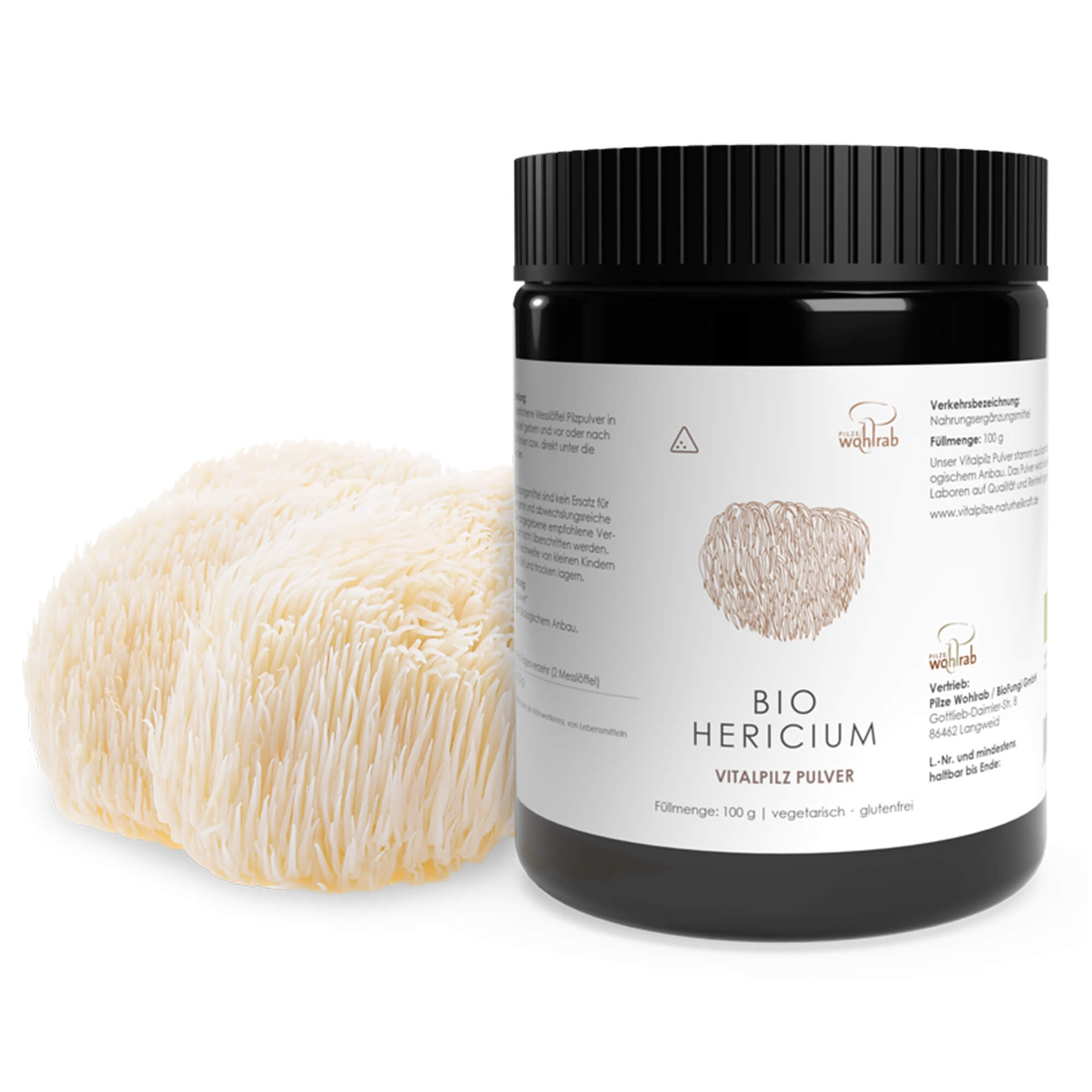
Hericium - Lion's mane
Hericium erinaceusDue to its imposing appearance, the lion's mane is also known as the monkey head, coral or pom-pom mushroom.
The white-beige fruiting body is 5-40 cm in size; on a short stipe sits a bulb covered with many dense, 2-5 cm long, soft spines. It is native to the entire northern hemisphere but is rare and prefers to grow on very old beech and oak trees. In China, the hedgehog spikenard has been cultivated as an excellent edible and medicinal mushroom since the 1950s. It is also considered a delicacy by gourmets in Europe due to its exquisite taste - including lobster - and its fleshy texture. There are 32 different substances responsible for its aroma, far more than in mushrooms or oyster mushrooms.
In traditional Chinese medicine, Hericium harmonizes the five functional circuits of the heart, lungs, spleen, liver and kidneys. It is said to be particularly important as a tonic for the entire digestive tract and for the nervous system. The mushroom is also used to stimulate the immune system and prevent cancer.
Hericium is rich in nutrients and vital substances, including almost all essential amino acids for humans, many vitamins, minerals and trace elements as well as plenty of polysaccharides and polypeptides, which are said to increase immune function and inhibit the growth of malignant cells. The hericinones and erinacins contained in hedgehog spikenard make the mushroom unique: these highly active substances are able to cross the blood-brain barrier and can therefore act directly on the brain and nervous system. There they activate the NGF (nerve growth factor) protein complex, which is responsible for maintaining and expanding our nervous system.












